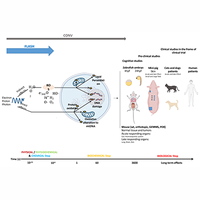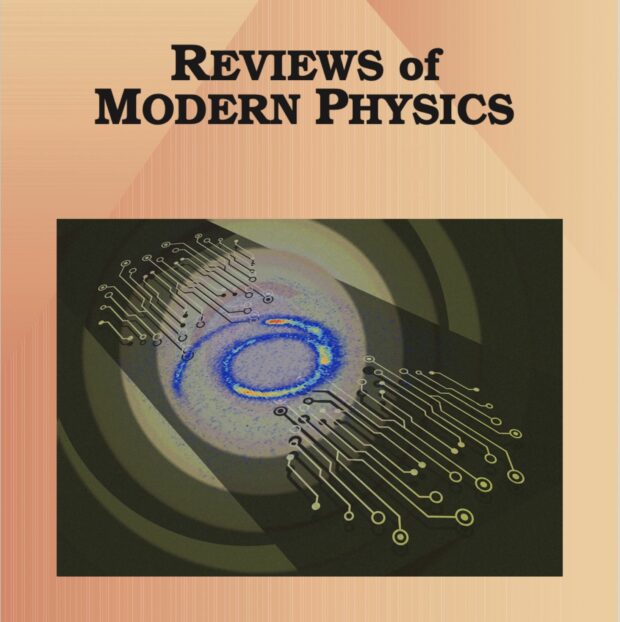FLASH: New intersection of physics, chemistry, biology, and cancer medicine
IF 44.8
1区 物理与天体物理
Q1 PHYSICS, MULTIDISCIPLINARY
引用次数: 0
Abstract
Ultrahigh dose rate, FLASH radiotherapy has emerged as one of the most promising innovations over the past decade in the field of radiation oncology, with the potential to eradicate radiation resistant primary tumors and improve the therapeutic outcome for cancer patients. FLASH is based on delivering radiation doses at ultrahigh dose rates (UHDR; ), more than 1000 times faster than irradiation at conventional dose rates (CONV). The experimental evidence demonstrating the differential effect of dose rate modulation on tumors and normal tissue is reviewed. Preclinical data consistently show that the antitumor efficacy of cytotoxic doses is not dependent on dose rate, but in normal tissues UHDR significantly reduces normal tissue toxicities compared to CONV, as observed in vivo. These observations define the FLASH effect. The FLASH effect has been reported to occur when using single or hypofractionated dose regimens in several experimental animal models (mice, rat, zebrafish, pig, and cats) and in multiple organs (lung, skin, gut, and brain) by numerous groups worldwide. Note that the FLASH effect has been demonstrated with electron, photon, and hadron (proton and heavier ion) beams. The current status and future technological development are reviewed, with an emphasis on critical beam parameters, future beam modalities, and prerequisites for safe clinical translation in terms of dosimetry, radioprotection, and treatment planning systems. Mechanistic investigations at the physicochemical and biological levels are presented, as are strategies to support and initiate clinical translation. This comprehensive review provides multidisciplinary radiation scientists with a road map of the technological, physical, chemical, biological, and clinical considerations that have made FLASH topical. These considerations are presented with a realistic and practical backdrop of the limitations and challenges that lie ahead.

FLASH:物理学、化学、生物学和癌症医学的新交叉点
超高剂量率 FLASH 放射疗法是过去十年来放射肿瘤学领域最有前途的创新技术之一,有望根除耐放射的原发性肿瘤,改善癌症患者的治疗效果。FLASH以超高剂量率(UHDR; >40Gy/s)照射剂量为基础,比常规剂量率(CONV)照射速度快1000多倍。本文回顾了证明剂量率调制对肿瘤和正常组织产生不同影响的实验证据。临床前数据一致表明,细胞毒性剂量的抗肿瘤效果并不依赖于剂量率,但在正常组织中,超高剂量率辐照比常规剂量率辐照显著降低了正常组织的毒性,正如在体内观察到的那样。这些观察结果定义了 FLASH效应。据报道,全球许多研究小组在多个实验动物模型(小鼠、大鼠、斑马鱼、猪和猫)和多个器官(肺、皮肤、肠道和大脑)中使用单剂量或低分剂量方案时,都出现了 FLASH 效应。请注意,FLASH 效应已在电子、光子和强子(质子和重离子)束中得到证实。本文回顾了目前的状况和未来的技术发展,重点是关键的射束参数、未来的射束模式,以及在剂量测定、放射防护和治疗计划系统方面实现安全临床转化的先决条件。此外,还介绍了物理化学和生物学层面的机理研究,以及支持和启动临床转化的策略。这篇全面的综述为多学科辐射科学家提供了一份技术、物理、化学、生物和临床考虑因素的路线图,这些考虑因素使 FLASH 成为热门话题。在介绍这些考虑因素的同时,还以现实和实用为背景,介绍了未来的局限性和挑战。
本文章由计算机程序翻译,如有差异,请以英文原文为准。
求助全文
约1分钟内获得全文
求助全文
来源期刊

Reviews of Modern Physics
物理-物理:综合
CiteScore
76.20
自引率
0.70%
发文量
30
期刊介绍:
Reviews of Modern Physics (RMP) stands as the world's foremost physics review journal and is the most extensively cited publication within the Physical Review collection. Authored by leading international researchers, RMP's comprehensive essays offer exceptional coverage of a topic, providing context and background for contemporary research trends. Since 1929, RMP has served as an unparalleled platform for authoritative review papers across all physics domains. The journal publishes two types of essays: Reviews and Colloquia. Review articles deliver the present state of a given topic, including historical context, a critical synthesis of research progress, and a summary of potential future developments.
 求助内容:
求助内容: 应助结果提醒方式:
应助结果提醒方式:


